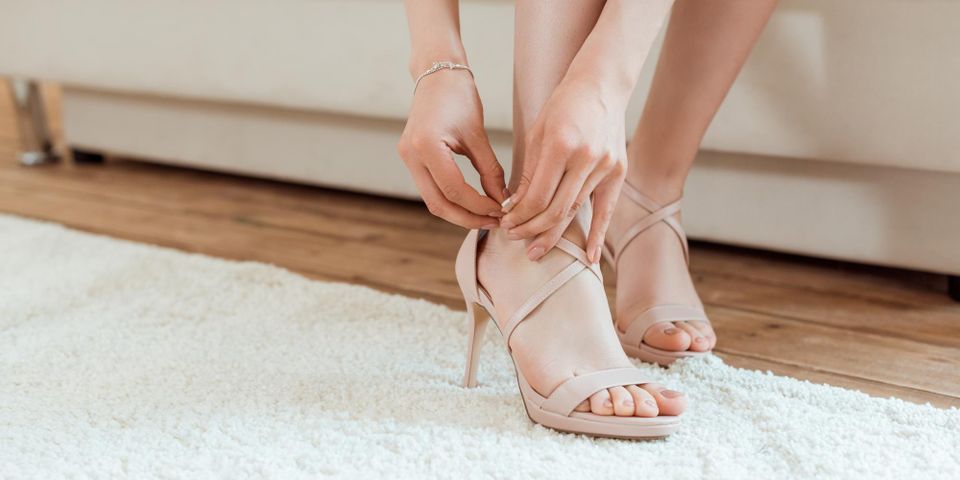
When you first slip them on and glance in the mirror, high heels can make you feel unstoppable. However, after a few minutes of standing or walking around, you’re probably ready to take a break. By wearing high heels daily, you could develop serious foot problems. Use the following guide to prevent short-term discomfort and lasting podiatry issues.
Problems High Heels Can Cause
When the balls of your feet take the brunt of your weight, you might experience pain or bruising between the base of the toes and the arch of your foot. The ideal footwear should allow you to stand with your spine aligned, and your weight evenly distributed on your feet.
Because of the angle at which high heels position your feet, the weight of your body presses the toes into the front of the shoe as you walk. This can cause blisters, bruises, or raw spots in mild cases, but over time, it can also cause hammertoes—when the smaller toes start to curl over or bend like claws. Many high heels also feature narrowed toe boxes, which cinch the top of your toes together. As a result, you might start to develop a bunion on the inner part of your foot, beneath the big toe, as the bottom of the big toe joint is pushed outward.
The elevated heel also shortens the plantar fascia that runs along the bottom of your arch and into your calf muscle. This could result in plantar fasciitis, or soreness and shooting pains when you walk normally. Still, the damage isn’t restricted to your feet alone; when you alter the natural position of your feet, you misalign the bones and muscles in your legs, pelvis, and back. As a result, you could deal with tension in your hamstrings, lower back, neck, and shoulders.
Ways to Mitigate the Damage
 To avoid these consequences, save your high heels for special occasions. If you wear them for work, take breaks from standing and switch to sneakers or flats whenever possible. If you want to maintain height while lessening the strain on your feet, opt for a platform high heel, which raises the toe section of the shoe for more even weight distribution.
To avoid these consequences, save your high heels for special occasions. If you wear them for work, take breaks from standing and switch to sneakers or flats whenever possible. If you want to maintain height while lessening the strain on your feet, opt for a platform high heel, which raises the toe section of the shoe for more even weight distribution.
Stay away from pointed-toe heels that squeeze your toes together. When shopping for heels, ensure there’s no wiggle room—while you don’t want them to be too tight, an extra half-inch of space causes your toes to jam forward with every step. When you get home and take off your high heels, take a few minutes to stretch out your hamstrings, calves, and Achilles tendons.
If you’re experiencing any of these foot problems, turn to Choice Podiatry Associates of Cincinnati, OH. With six different locations in the area, it’s easy to find help without traveling far. They use top-tier diagnostic tools and therapies to treat everything from pediatric foot problems to diabetic issues. To learn more about their services, visit the website or call (513) 574-2424 today.
About the Business
Have a question? Ask the experts!
Send your question

